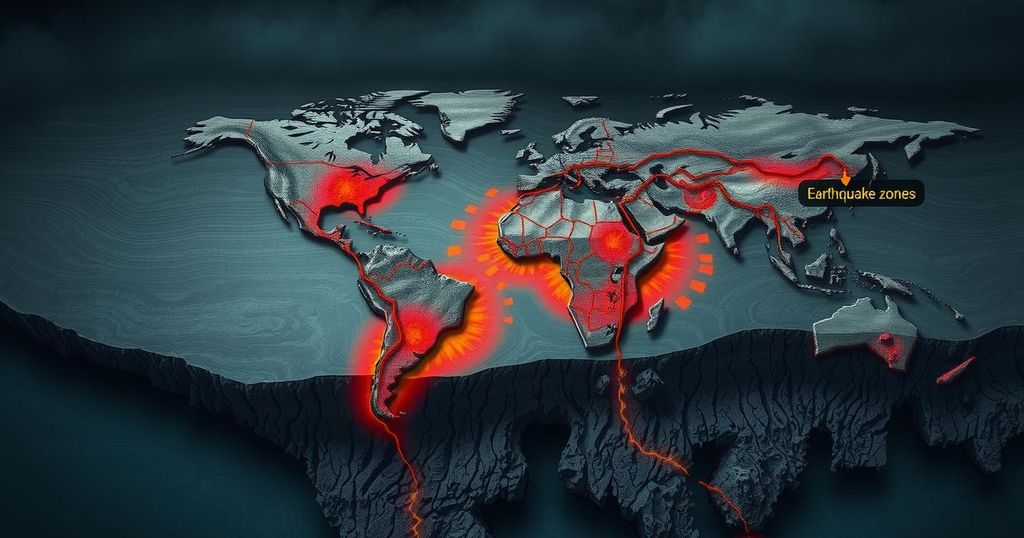Seismic Threats and The Anticipation of ‘The Big One’

Myanmar recently suffered a 7.7 magnitude earthquake causing widespread devastation, reminding the world of the impending threat known as ‘The Big One’. Historically, the largest earthquake recorded was the Valdivia Earthquake in 1960, estimated at 9.4-9.6. While popular narrative focuses on the San Andreas Fault, experts suggest the Cascadia Subduction Zone poses a significant risk. Other regions including the Himalayas and the Philippines also face serious earthquake threats, though the timing of these events remains uncertain.
Recent seismic activity in Myanmar has raised global awareness, as a powerful earthquake measuring 7.7 on the Richter scale devastated the region, particularly impacting Mandalay and neighboring countries like Thailand. With hundreds feared dead and billions in property damage, this earthquake serves as a stark reminder of nature’s forces and the critical need for preparedness. This incident also prompts discussions about another anticipated disaster known as ‘The Big One’, with uncertainty surrounding its timing but clarity on possible locations and consequences.
Historically, the largest registered earthquake was the Valdivia Earthquake in Chile in 1960, measuring between 9.4 and 9.6 on the Richter scale. This massive quake lasted approximately 10 minutes and incited tsunamis that reached the coasts of Chile, Hawaii, Japan, the Philippines, and further. Though exact casualty figures remain unclear, estimates suggest a death toll between 1,000 and 6,000. Similarly, the devastating Indian Ocean earthquake of 2004 measured 9.2-9.3, resulting in over 200,000 fatalities, marking it as the most catastrophic of the 21st century.
The phrase ‘The Big One’ emerged from popular culture in the U.S. related to anticipated earthquakes along the San Andreas Fault, which stretches over a thousand kilometers in California. A 1953 study by geologists Mason Hill and Thomas Dibblee ignited this narrative, predicting significant seismic events could occur, potentially reaching magnitudes of 7-8. This fault’s potential to devastate renowned cities like Los Angeles and San Francisco has been the subject of multiple films, including “Earthquake” (1974) and “San Andreas” (2015).
Recent geological research indicates that a more severe event, referred to as The Big One, may actually originate from the Cascadia Subduction Zone, located north of the San Andreas Fault, along the Pacific coast from Canada to Northern California. Predictive models estimate this earthquake could measure between 8 and 9.2 on the Richter scale, threatening urban populations like Seattle and other high-density areas encompassing over five million residents, and potentially causing widespread destruction.
The projected impact of The Big One includes significant casualties and extensive destruction of buildings, with experts estimating tens of thousands could be injured or killed, while millions face homelessness. Due to potential infrastructural failures, the response effort may be severely hindered, exacerbating the disaster’s impact across Canada and adjacent regions.
While geologists assert The Big One is inevitable, predicting its timing raises uncertainty. Research from Chris Goldfinger et al. at Oregon State University highlights a 37% likelihood of a major quake in this region by 2060. The Cascadia Subduction Zone last experienced a major quake in the early 1700s, which resulted in devastating tsunamis reaching Japan. Despite varying views regarding this estimate, the potential for a catastrophic event is widely acknowledged by seismology experts.
Contrary to Hollywood’s portrayal, many researchers caution that a seismic event measuring around 8 on the Richter scale could impact the Himalayan region, endangering North India, including metropolitan areas like Chandigarh and Delhi. Casualties and damages could far surpass those from The Big One in the U.S. Another area of concern involves the Marikina Valley fault system in the Philippines, which could also experience significant seismic activity generating hundreds of thousands of casualties. Like the Cascadia predicted disaster, there is no specific timeline for these potential events, but the risk remains ever-present.
The occurrence of devastating earthquakes remains a pressing concern across various global regions, with recent events highlighting the urgent need for preparedness. While ‘The Big One’ remains a focal point in popular culture, its potential devastation is echoed by the risks associated with both the Cascadia Subduction Zone and seismic hazards in the Himalayas and the Philippines. Although predictions about timing vary, the scientific consensus emphasizes the crucial understanding and readiness for future seismic events, underscoring the unpredictable nature of geological phenomena.
Original Source: indianexpress.com







